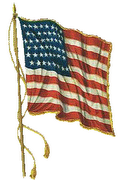Lifting the veil to reveal truth behind the faith
SANDRA DICK
TARA BUTT has chosen her outfit carefully. She swishes by in an elegant black salwar kameez, the long silken black tunic adorned with intricate gold embroidery, and a matching scarf over her shoulders.
She could just as easily have turned up in jeans and a sweater, or a skirt and blouse; or maybe she could have appeared with her dazzling smile shrouded in the hijab, or veil, which recently caused so much controversy.
Clothes, so much at the heart of the recent debate about British Muslim women, are for her - like most other British women - chosen according to her mood and the occasion.
"Sometimes I wear Western clothes and sometimes I wear traditional clothes," says Tara, whose family arrived in Britain from Pakistan almost 30 years ago. "The way I dress depends on how I feel and where I am going."
Individual choice is a concept most people would instinctively say is a fundamental British characteristic. Yet while many Muslim women have not experienced any problems in Edinburgh, with the vast majority of people happy to live and let live, some have not been so lucky.
Like mother of three Nasim Azad, 37. "I've been called Taliban," she sighs. "You just feel it's not right. You are walking down the street and people shout 'Taliban' at you. People say to my husband 'Hey Mohammed'."
Nasim, elegant in a long grey coat and matching hijab covering her hair, is sitting beside Tara in North Edinburgh Art Centre in Muirhouse. They are surrounded by several other Muslim women of varying ages.
For so long a group that seemed to exist in the shadows, they have emerged blazing in their rainbow-coloured salwar kameez silks and satins, determined to spread understanding about themselves and their religion.
The result is a booklet conceived in the aftermath of the London bombings, when British Muslims suddenly found themselves dragged into the heart of the terrorism melting pot.
"We had already visited St Mungo's Museum of Religious Life and Art in Glasgow and our older members were exceptionally impressed that Islam was represented so well," says Nasim.
"It made us think about what we could do, and then those terrible bombings happened. There was such a negative backlash.
Human beings died, regardless of the colour of their faces - yet it felt that all Muslims were blamed."
...
Pertinent Links:
1) Lifting the veil to reveal truth behind the faith
Friday, November 24, 2006
Subscribe to:
Post Comments (Atom)




No comments:
Post a Comment